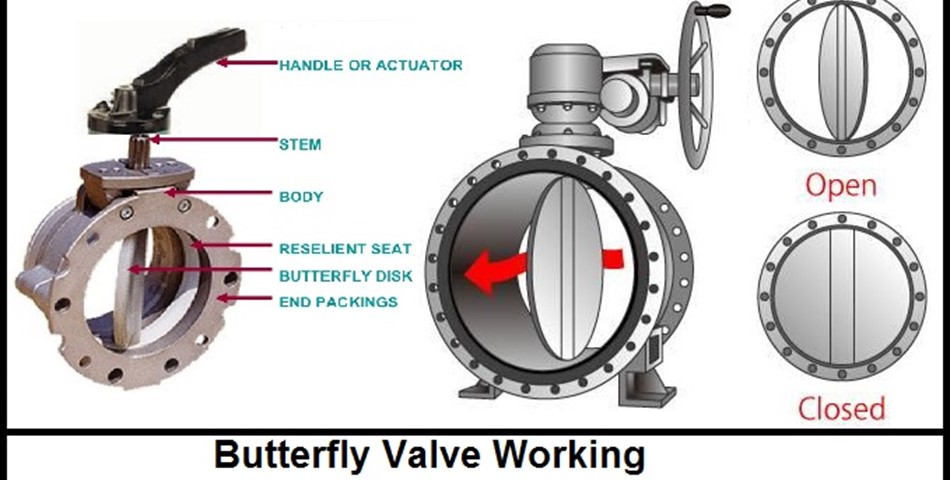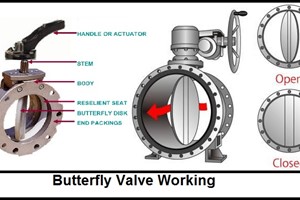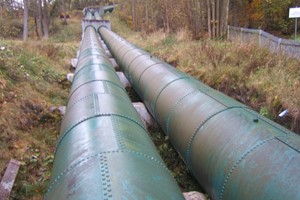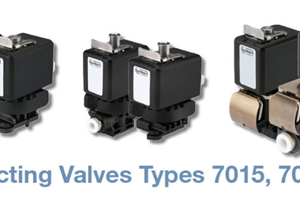Global industrial valves market is expected to surpass $77 billion by 2022, according to ‘Global Industrial Valves Market by Product Type, By Application, By Region, Competition Forecast & Opportunities, 2012 – 2022’. In the coming years, the demand for industrial valves is anticipated to rise as they are used in various commercial construction projects, automation projects and so on. Increased industrialization, expansion of existing facilities have spurred the demand owing to technological innovations and boost the industry growth.
Industrial Valves Insights:
Industrial valves are of various types such as Gate Valves, Globe Valves, Ball Valves, Butterfly Valves, Check Valves, Pressure Valves, and Diaphragm Valves etc. These valves perform various functions working on a different working principle.
Ball Valves, used for flow control and whenever tight shut-off is required, have accounted for over 19% of the revenue share in 2014.
In the recent years, there is a huge demand for butterfly valves as they are used extensively in the automation, oil & gas industries.
Check valves’ are going to witness a sturdy growth, with a CAGR of over 7% in the next coming years. These unidirectional valves are used to evade the process flow from returning to the system, thereby preventing it from damaging the equipment and disrupting the process.
Industrial valves are devices that are used to regulate liquids, gases, and slurries. The flow of liquids or gases can be controlled using these valves. This can be done through pipes and other passageways by opening, closing, and partially obstructing the passageway or pipe.
Different types of Industrial Valves include:
- Gate Valves
- Globe Valves
- Ball Valves
- Butterfly Valves
- Check Valves
- Gate Valves
Gate Valves are designed to serve as isolation valves. These valves help to control the flow of liquid through the pipes. To start or stop the water flow or any other kind of liquid, these valves are affixed to the pipelines. Gate valves are used for various purposes, and they can be seen commonly in homes and commercial centers. Different materials such as stainless steel, cast iron, alloy steel, forged steel etc. are used to manufacture these valves.
- Globe Valves
Globe Valves are among the most popular type of valves used in various applications. These valves are similar to gate valves and use linear motion to throttle flow. They are used to control the flow in a pipeline, and they regulate by the position of a movable disk (or plug) in relation to the stationary ring seat. The major advantage of a globe valve is it does not leak as much as other valves.
Globe valves are composed of a baffle that splits the inside of the pipe, which is typically parallel to the pipe's length. They are named for their spherical body shape with the two halves of the body being separated by an internal baffle. It consists of a movable disk-type element and a stationary ring seat in a generally spherical body.
- Ball Valves
Ball Valves As the name suggests, ball valves are valves that use a ball to control the flow of substances from one opening to the next. These valves work by allowing the hole to be open, blocked, or open partially to regulate the flow of gas/liquid. Ball valves are the ideal choice for using with gases as they are able to offer better sealing. They are very versatile as they support pressures up to 700 bars and temperatures up to 200°C and sizes typically range from 0.5 cm to 30 cm. They are easy to operate and repair as they contain a simple structure.
They are designed with special measures that permit only a 90-degree rotation which is required for the opening and closing of ball valves. These valves are a notable industrial choice because of their reliable and air-tight sealing when in the closed position.
- Butterfly Valves
Butterfly Valves are designed to regulate flow, but with limited control capability. Butterfly valves are easily operated by rotating a handle 90 degrees. It consists of a metal disc in the body of the valve which is positioned perpendicular to the flow in the closed position. Regulation of liquid flow can be allowed through intermediate rotations. Butterfly valves are configured to operate electronically, manually or pneumatically.
They can be used for a broad range of applications within water supply, wastewater treatment, fire protection and gas supply, in the chemical and oil industries, in fuel handling systems, power generation etc. These valves can be operated by handles, gears or actuators according to specific needs.
- Check Valves
Check Valves are also known as Non-Return Valve (NRV). They allow liquid to flow in one direction only and prevents back flow of media in the reverse direction. The purpose of check valves is to prevent process flow from reversing in the system which could damage equipment or upset the process.
They are commonly found protecting pumps in liquid applications or compressors in gas systems where backflow could cause the pump or compressor to shut down. The basic design of a check valve reduces backflow in a line.
As they have a simpler design, they can operate without human interaction and automation. They rely on the flow velocity of the fluid to open and close. The higher the flow rate, the more open the valve will be until it reaches it maximum, fully open position.














